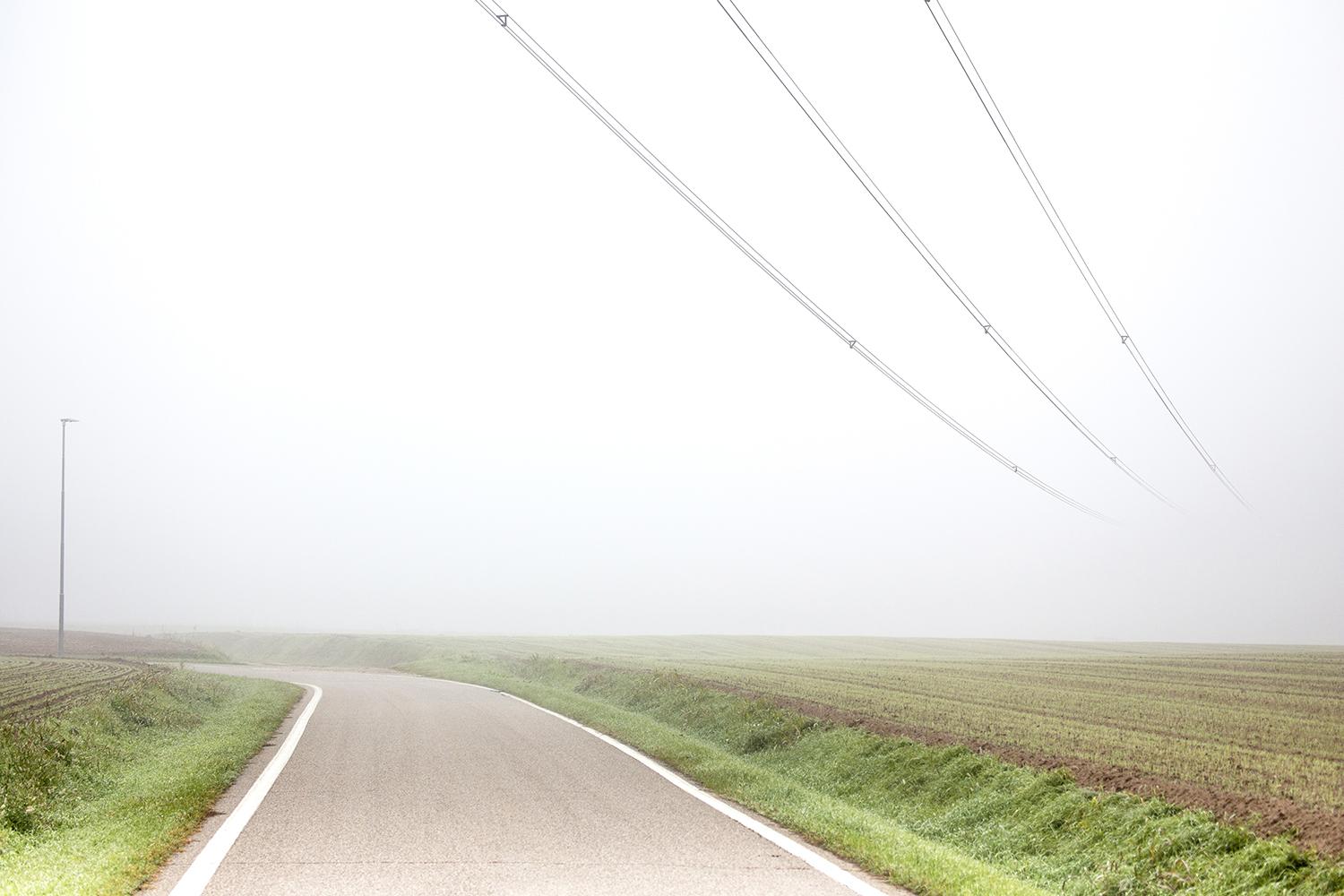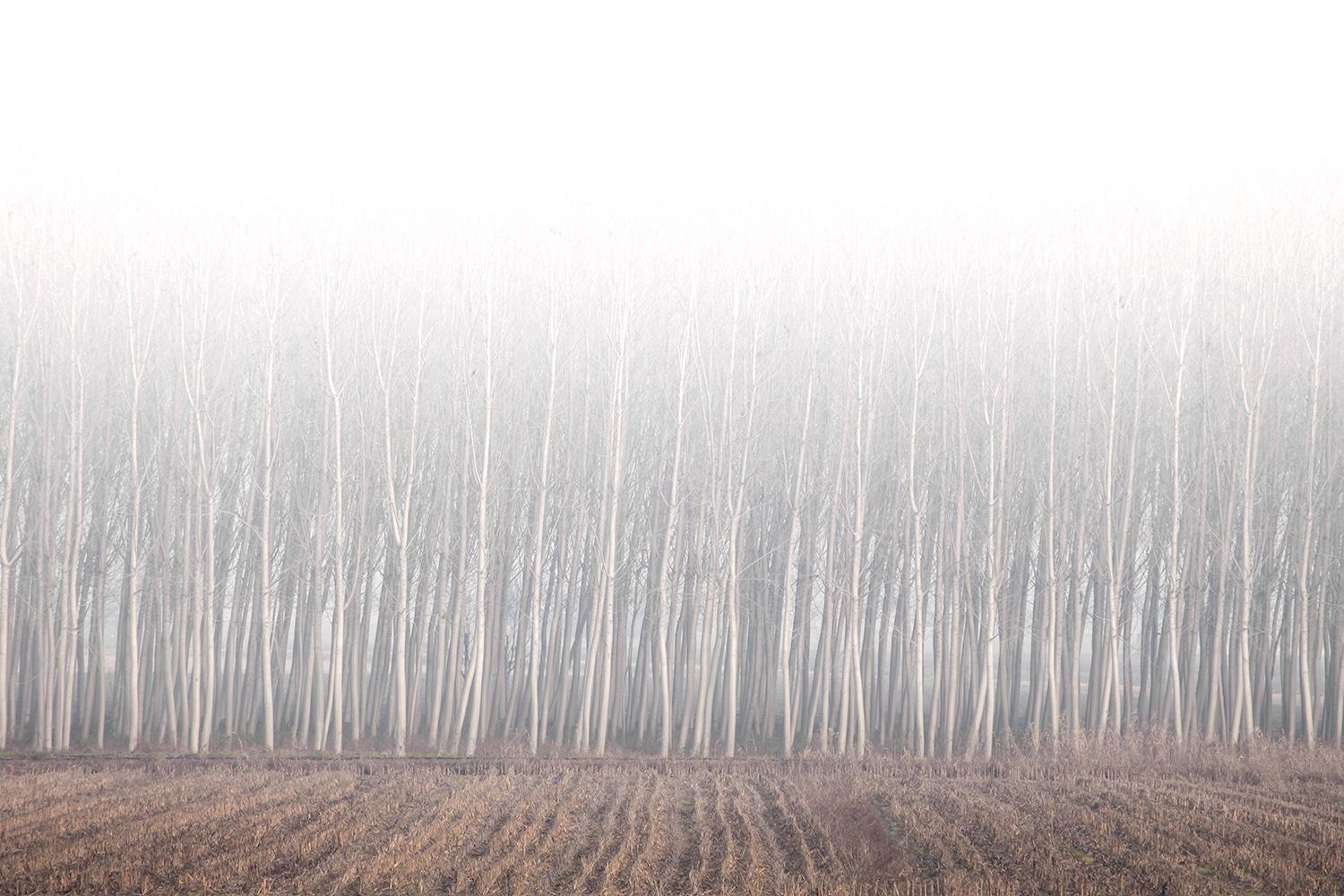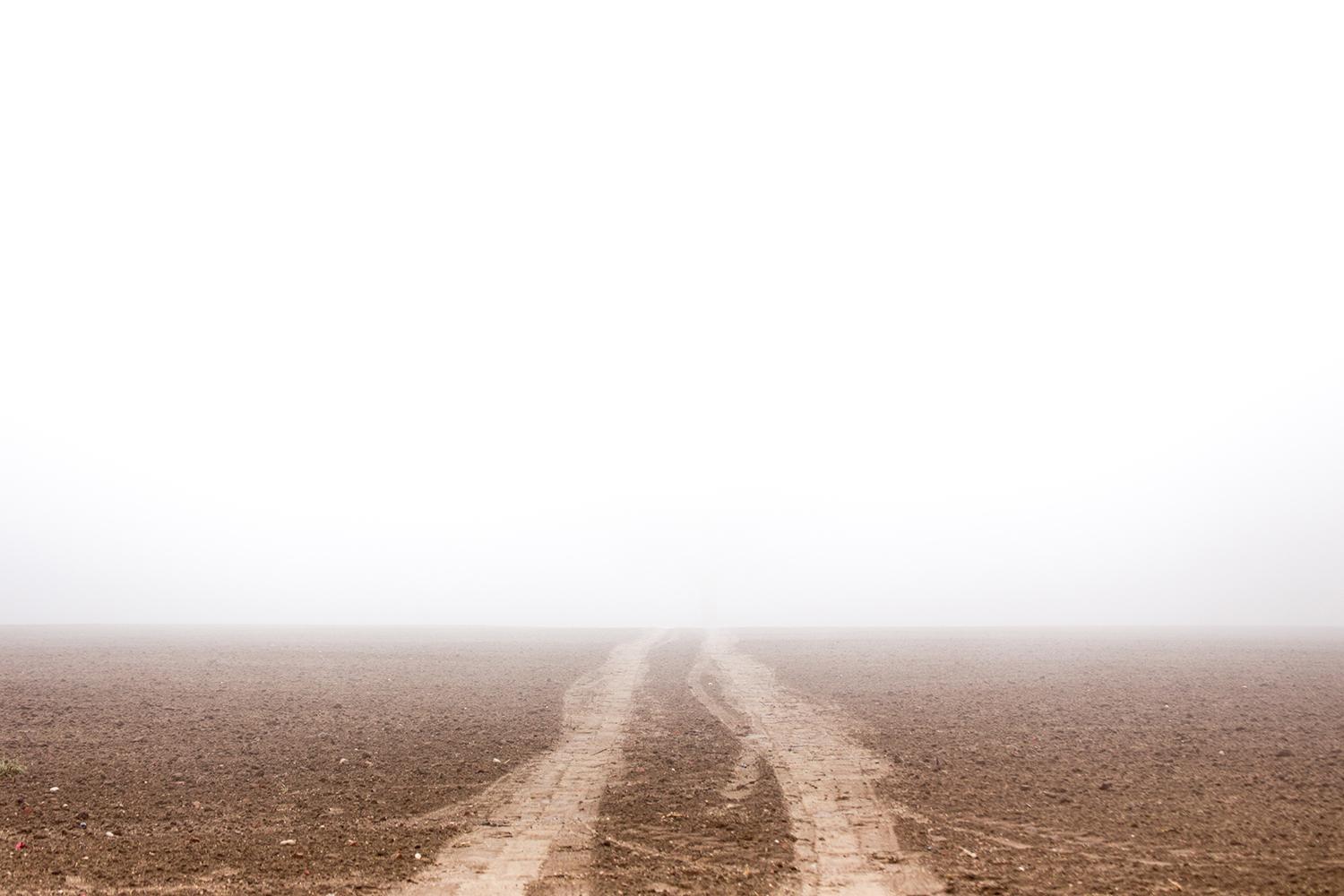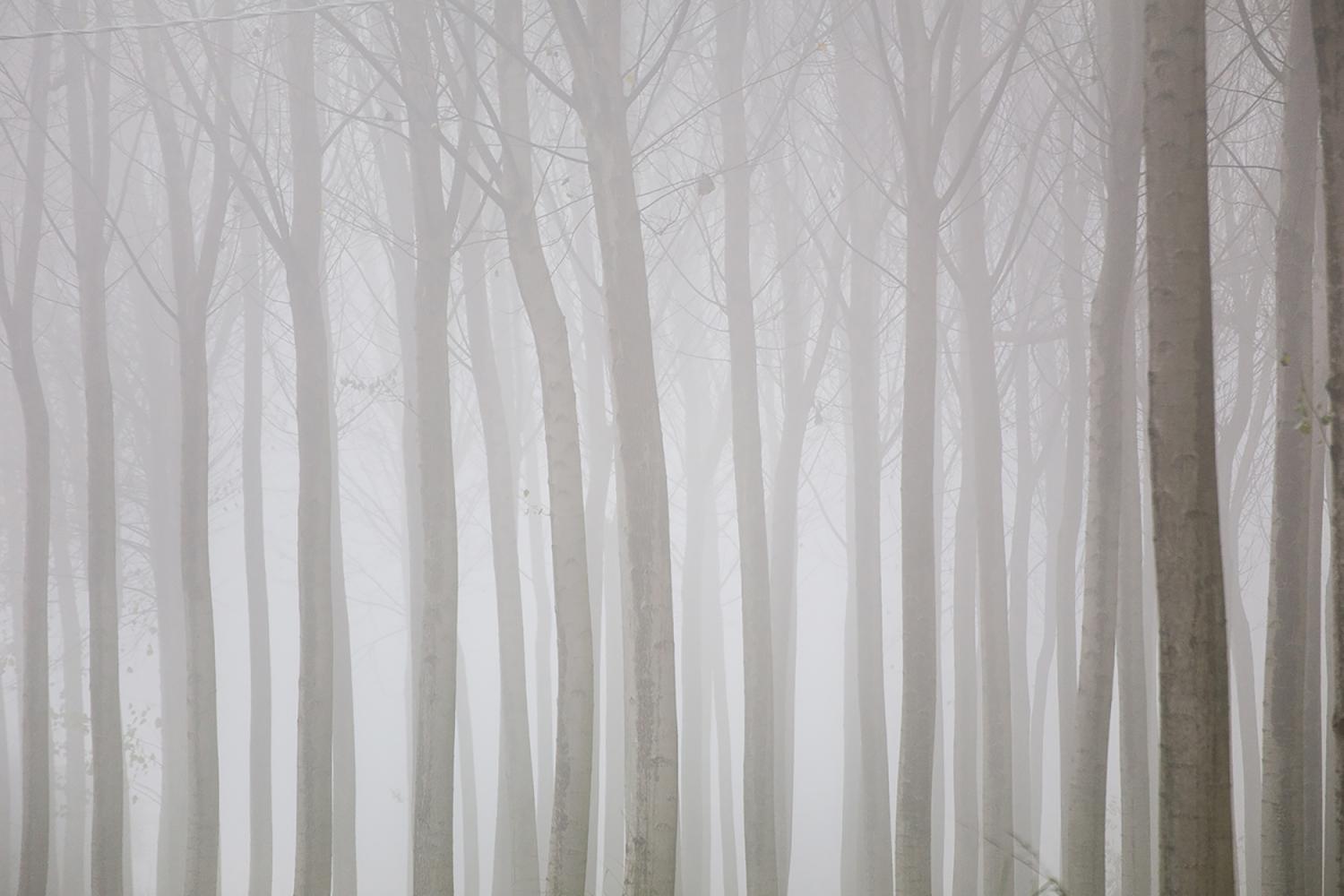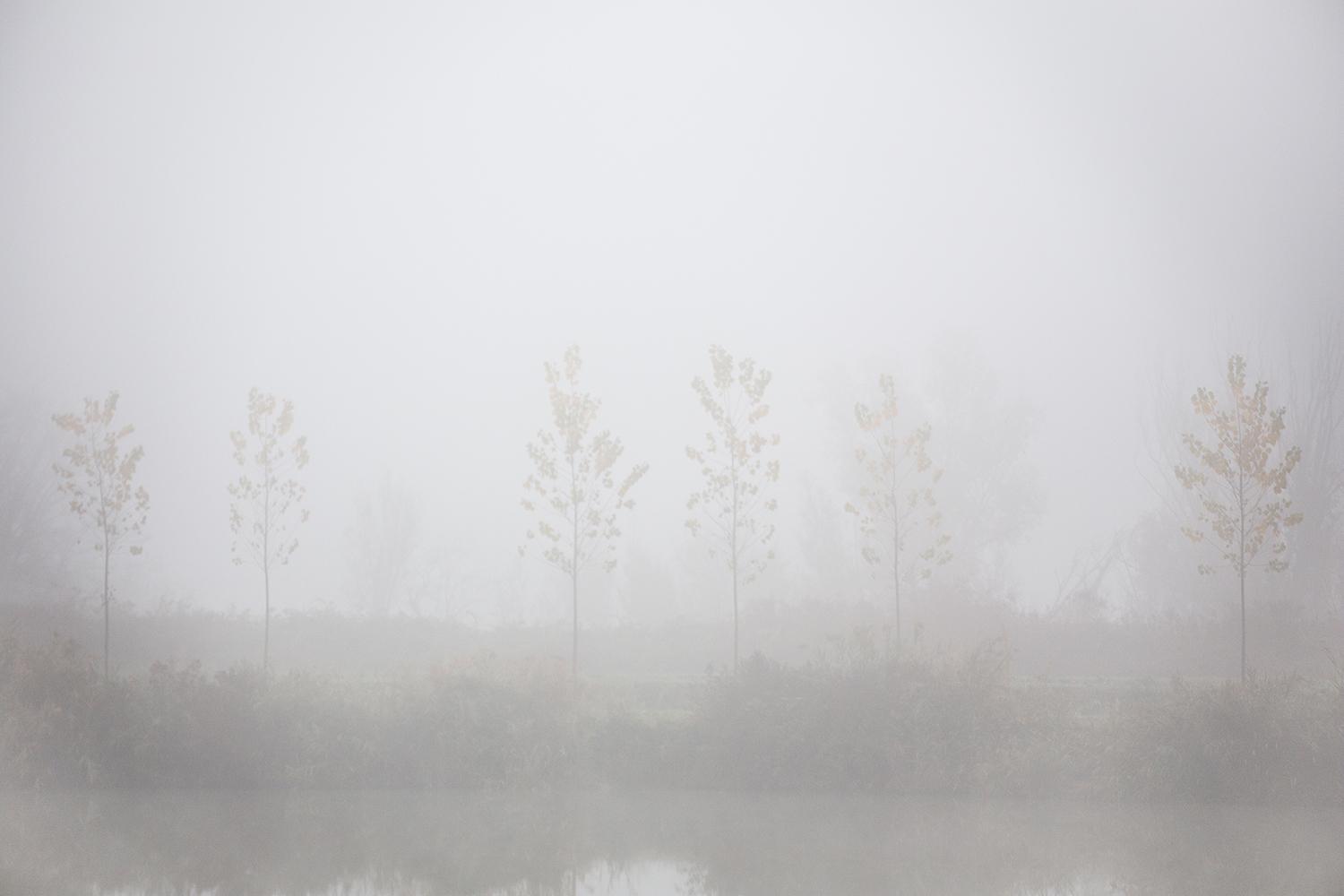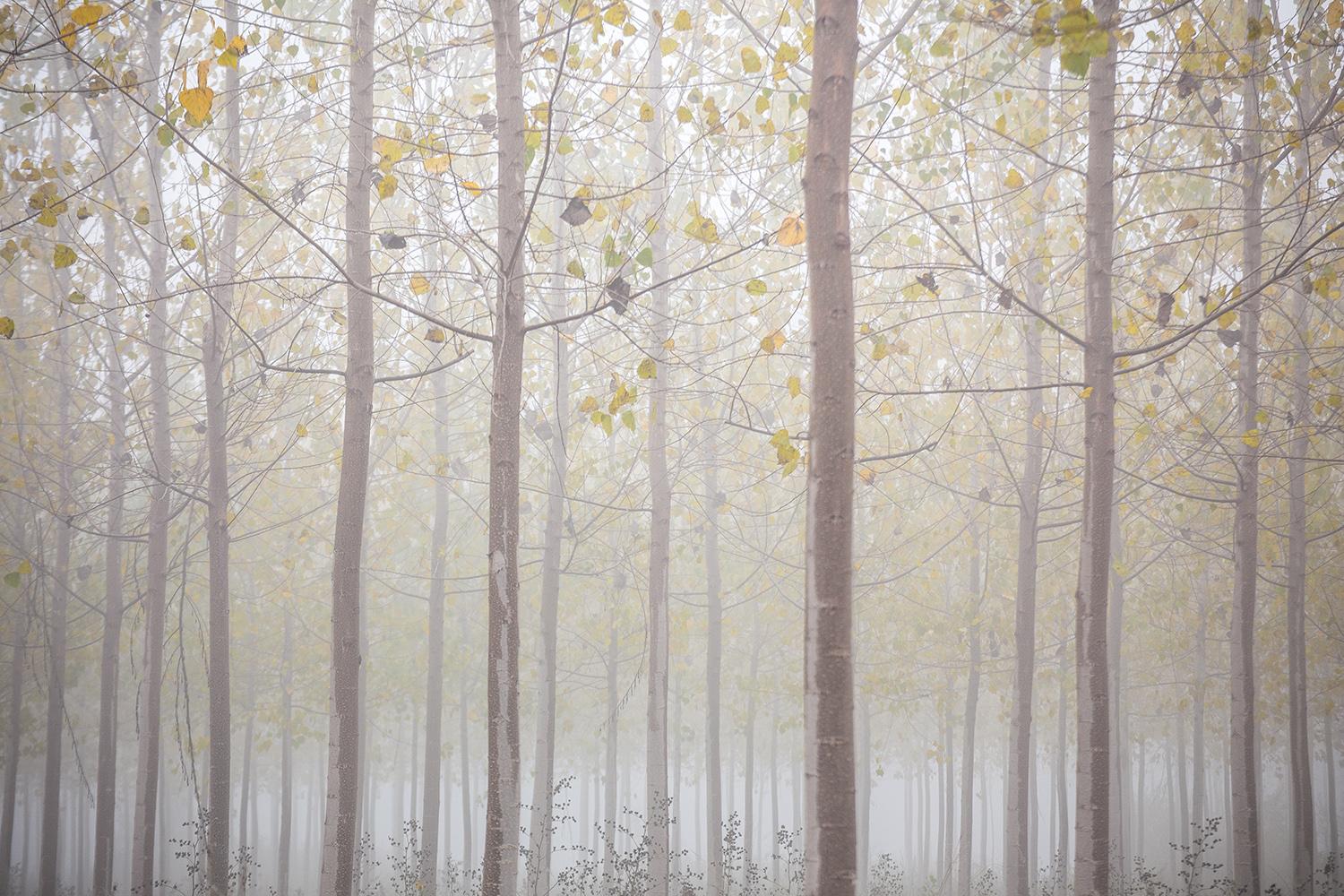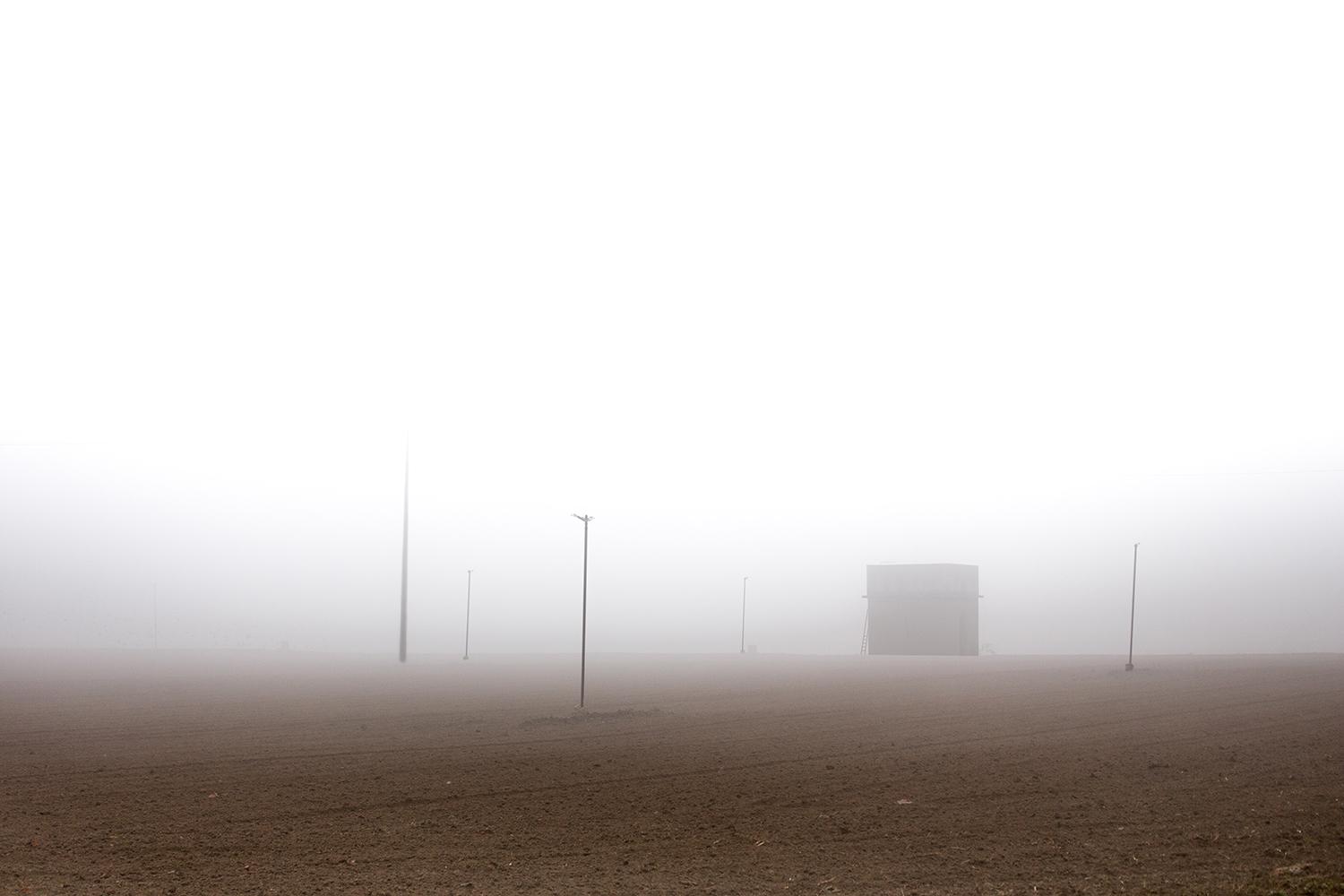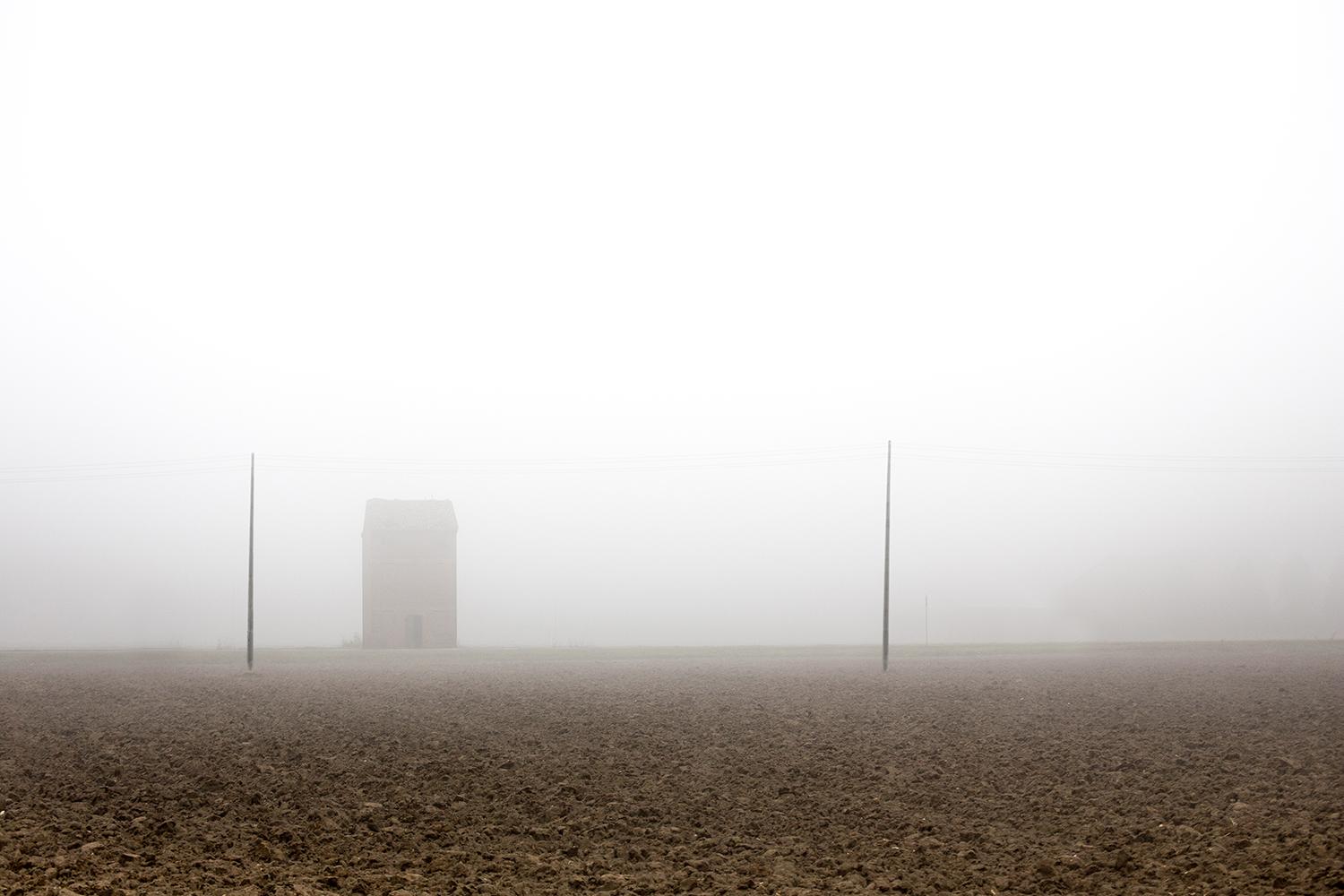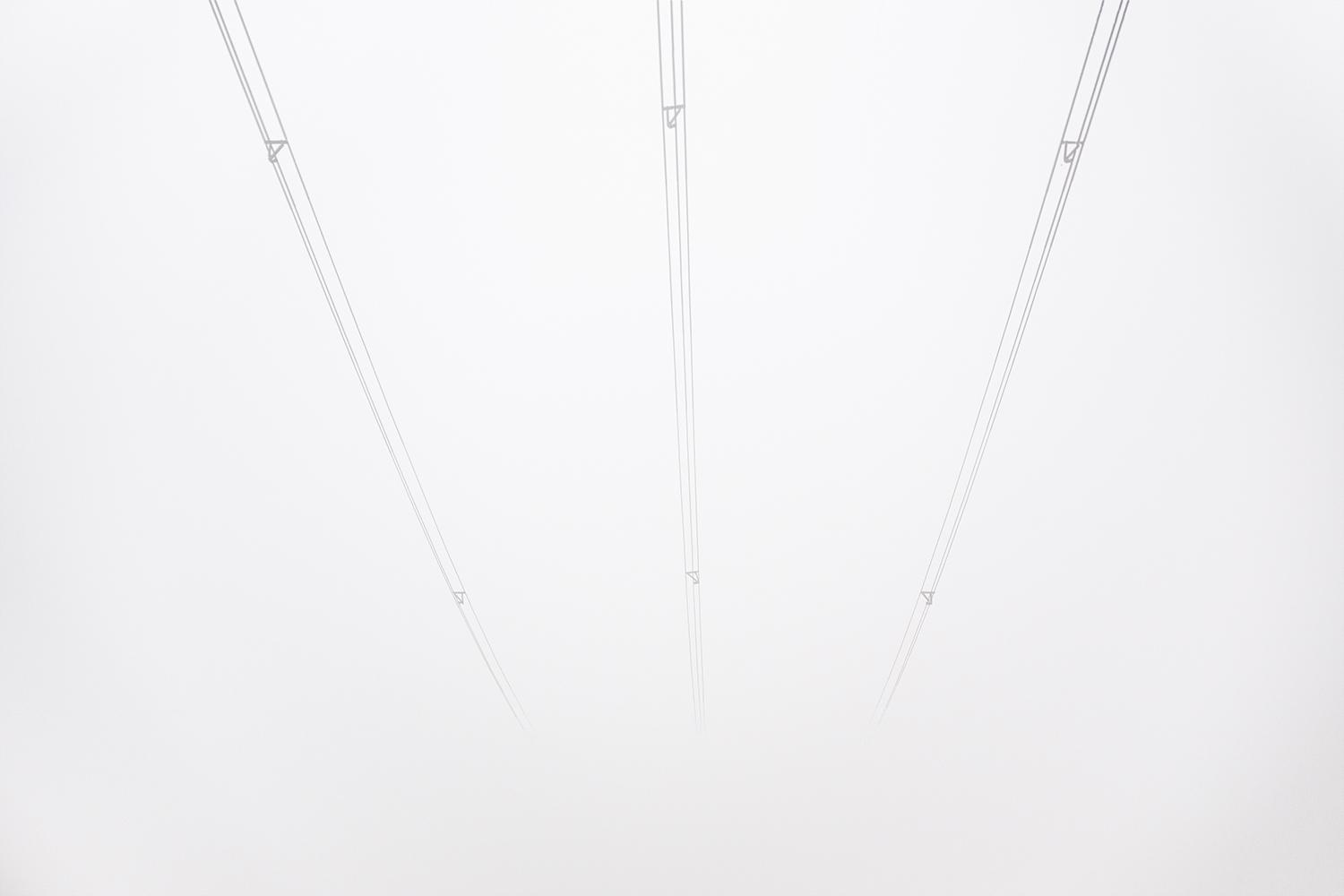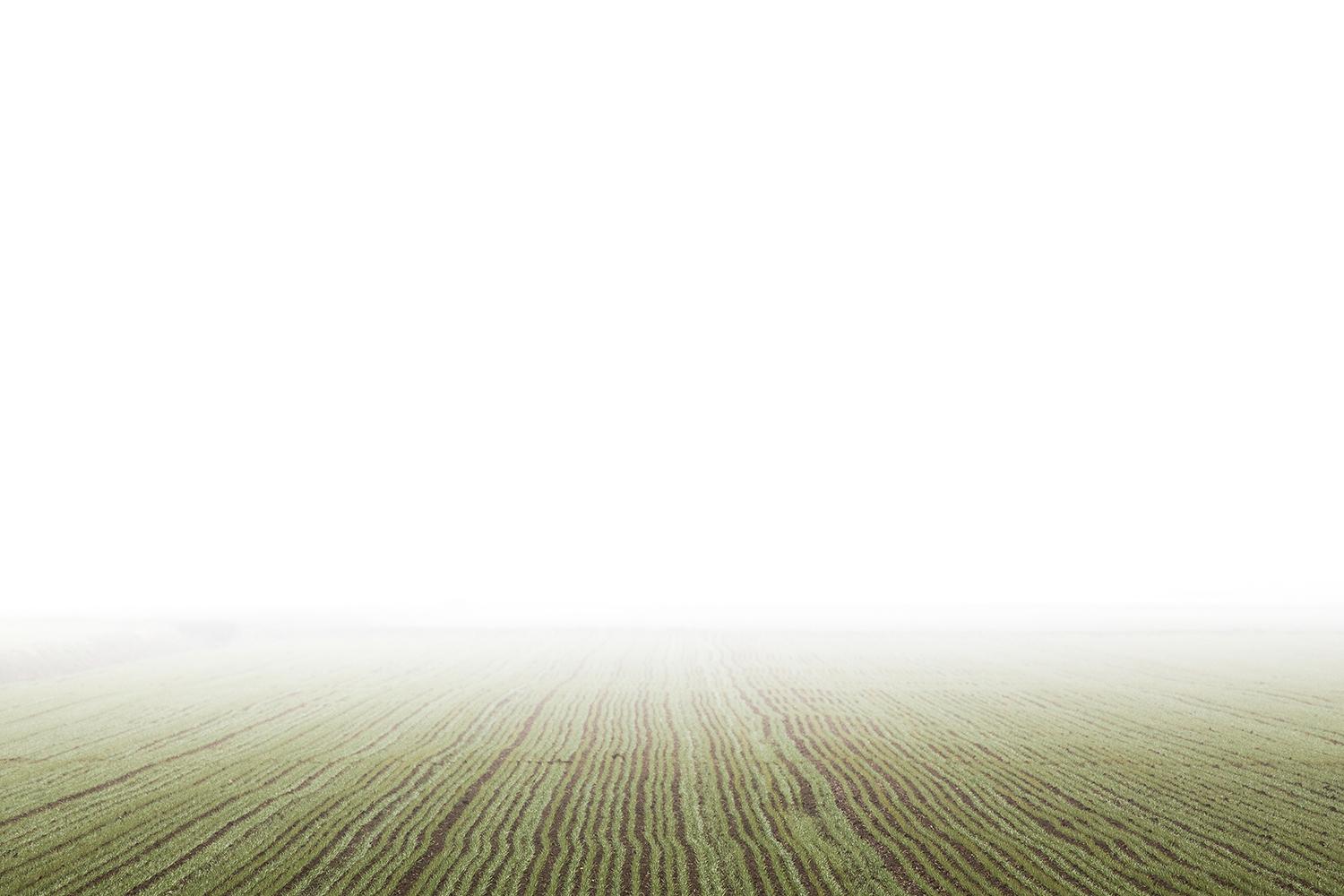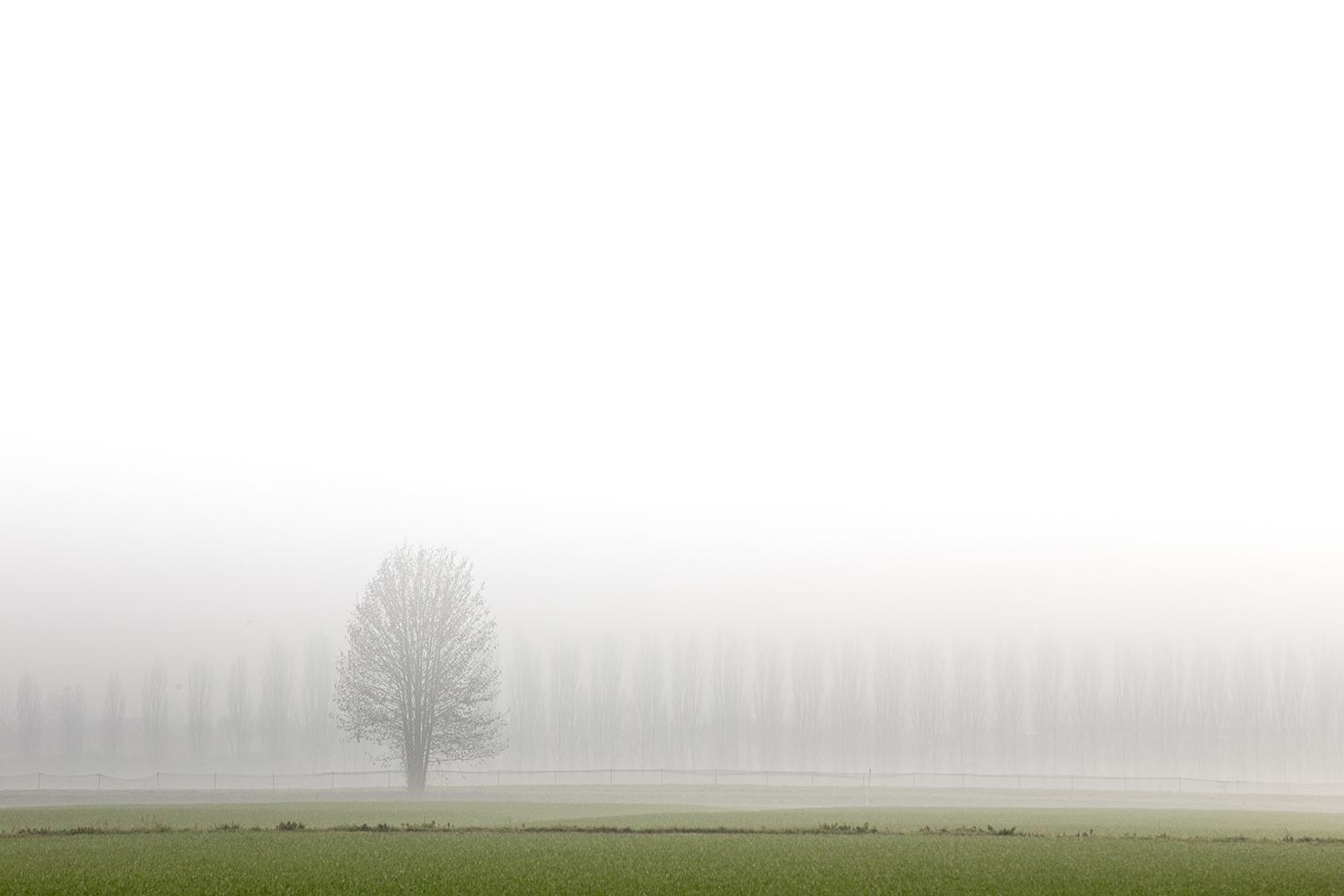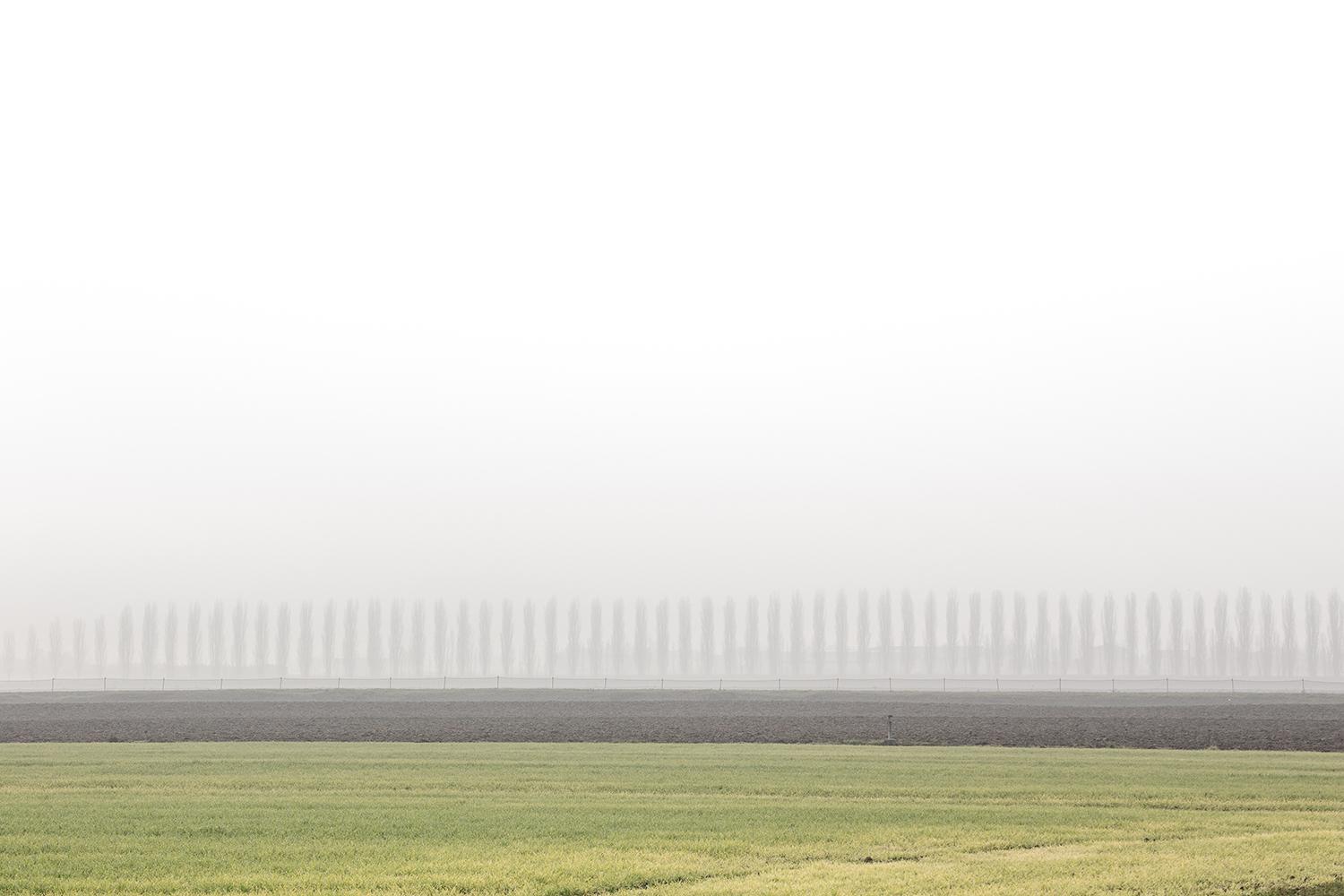
Laura Zamboni
physiognomies and silences of the Po Valley
Lots of land, endless horizons, geometrical landscape, connoted by horizontal surfaces and vertical punctual elements distributed on the large ground, rows, neat plantations, isolated houses with archetypical shape, sown fields where the shoots draw the ground as lines of escape. This is the physiognomy of the Po valley in Veneto region. And then the fog. Fog that is part of the identity of these places and, in winter, envelops them with silence, making them undefined. What matters is the physiognomy of the spaces, the set of elements that emerge from a muffled atmosphere, clean from what is not essential. Yet, even if it partially hides and makes undefined, the fog brings out the character of this place. The elements of the landscape are exalted because they are isolated from everything, made abstracted, detached from reality, returned in their essence. Fog helps the mind to perform a process of abstraction - material and temporal abstraction - in a sort of suspension whose protagonists are the elements of the landscape, devoid of any function. The means of reaching abstraction, the fog, is itself part of the Po valley plain: it is therefore an abstraction strongly rooted to the place. With the fog the horizon becomes even more infinite, the boundary between earth and sky is undefined, almost out of focus, the horizon is without visible limits. Only the rows of poplars, the poplars, form the visible background, a dematerialized background. And the silence of these images, as silent as the places represented, helps to capture the soul of the spaces, undisturbed
